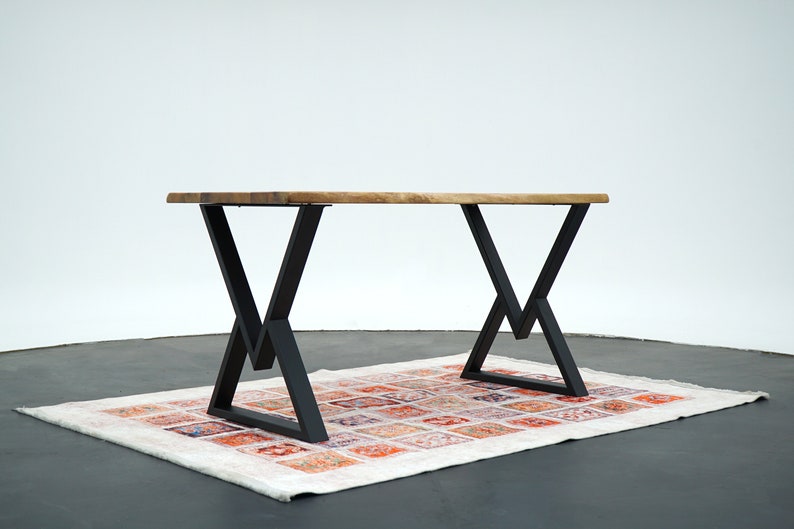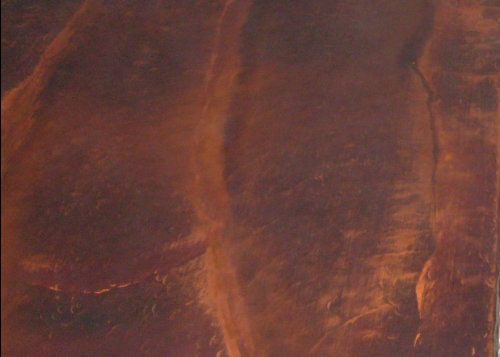Iniziale
>
Old West Iron Blog: Craftsmanship, Heritage & Hand-Forged Expertise
>
Crafting Elegance with Iron Table Legs and Copper Sheeting

Crafting Elegance with Iron Table Legs and Copper Sheeting
di Maddison Mellem su Oct 29, 2024In the world of interior design, trends come and go, but the allure of unique, handcrafted furniture remains timeless. As we move away from neutral palettes and minimalist styles, a new demand arises for furniture that speaks to individuality and craftsmanship. However, finding pieces that truly reflect your personality can often come with a hefty price tag and generic designs.
Enter the world of DIY furniture-making. With a little creativity and the right materials, you can create stunning and unique tables using iron table legs and copper sheeting. Not only does this approach allow you to craft a piece that perfectly fits your space and style, but it also offers a rewarding hands-on experience. In this guide, we'll explore the benefits of using steel table legs and copper tabletops, providing you with the knowledge and inspiration to design the perfect table for your home.

The Rise of DIY in Home Decor
Before we jump into the specifics of crafting with iron and copper, it's essential to understand why DIY projects have become so popular. First, they offer a level of customization that store-bought furniture simply can't match. When you create a piece yourself, you control every aspect of its design, from the dimensions to the color and finish.
Additionally, DIY projects are often more cost-effective than purchasing high-end furniture. By sourcing materials yourself and investing time rather than money, you can achieve a luxurious look at a fraction of the price. Plus, there's the satisfaction of knowing that you built something with your own two hands—a piece that becomes a conversation starter and a testament to your creativity.
Finally, DIY furniture-making is a sustainable choice. By building your own pieces, you can select eco-friendly materials and repurpose old items, reducing your environmental impact. This approach aligns with the growing trend of mindful living, where consumers are increasingly aware of how their choices affect the world around them.

Benefits of Steel Table Legs
When it comes to selecting the perfect base for your table, steel table legs offer a range of advantages that make them a top choice for DIY enthusiasts and professional furniture makers alike.
Durability and Strength
Steel is renowned for its strength and durability, making it an ideal material for table legs. Whether you're building a large dining table or a small side table, steel legs provide the support needed to ensure your piece remains sturdy and stable for years to come. Unlike wood, which can warp or crack over time, steel withstands the test of time, maintaining its shape and integrity even with daily use.
Versatile Design Options
One of the greatest benefits of using steel table legs is their versatility in design. Available in a variety of shapes and finishes, steel legs can complement any style, from industrial chic to modern elegance. You might choose sleek, straight legs for a minimalist look or opt for ornate, curved designs to add a touch of sophistication. Additionally, steel can be powder-coated in different colors, allowing you to match or contrast with your tabletop and existing decor.
Easy Maintenance
For those who value practicality, steel table legs are a dream come true. They require minimal maintenance, needing only occasional cleaning to keep them looking their best. Steel is resistant to stains and scratches, unlike other materials that may need regular treatments or touch-ups. This low-maintenance quality makes steel legs a practical choice for busy households or environments where durability is key.

Exploring Copper Table Tops
Copper tabletops bring a unique blend of beauty and functionality to any piece of furniture. Whether you opt for solid copper or copper sheeting wrapped around a wooden core, the rich hues and reflective surface of copper add a touch of elegance and warmth to your space.
Aesthetic Appeal
Copper's striking appearance is one of its most attractive features. With its warm, reddish-gold tones, copper adds a luxurious feel to any room. Over time, exposure to air and moisture creates a natural patina on the surface, adding character and depth to the material. This patina can range from deep browns and greens to soft blues, depending on environmental conditions and your own preferences.
Customization with Patinas
One of the exciting aspects of working with copper is the ability to customize its finish through the use of patinas. By applying different chemical treatments, you can achieve a variety of colors and textures, from aged and rustic to sleek and modern. This versatility allows you to tailor your tabletop to match your specific aesthetic, whether you're aiming for a vintage look or a more contemporary vibe.
Functional Benefits
Beyond its visual appeal, copper offers several functional benefits that make it an excellent choice for tabletops. It's naturally antimicrobial, which means it resists the growth of bacteria and other microbes, providing a cleaner surface for food preparation and dining. Additionally, copper is relatively soft compared to other metals, making it easy to work with during the crafting process. This malleability allows you to shape and mold the copper to fit any design you envision.

Creating Your Dream Table
Now that we've explored the benefits of using steel table legs and copper tabletops, it's time to bring your vision to life. Here are some steps and tips to guide you through the process of crafting your unique table:
Designing Your Table
Begin by sketching out your design, considering the dimensions and style you wish to achieve. Ensure that your tabletop and legs are proportionate and suit the intended purpose of the table. Consider how the table will fit within your space and complement your existing decor.
Selecting Your Materials
Choose high-quality materials that align with your design vision. For the legs, select steel in a finish that matches your aesthetic, whether it's polished, matte, or powder-coated. For the tabletop, decide between solid copper or copper sheeting, taking into account the level of patina you desire.
Building Your Table
Once you have your materials, assemble your table by attaching the legs to the tabletop using strong, durable fastenings. Ensure everything is level and secure before finishing the piece with any additional treatments or patina applications.
Finishing Touches
Add any final touches, such as protective coatings or decorative elements. Consider pairing your table with complementary chairs or accessories to enhance the overall look and feel.
Conclusion
Creating a table with iron table legs and copper sheeting is a rewarding project that allows you to express your creativity and craftsmanship. By combining the durability and versatility of steel with the aesthetic appeal and functionality of copper, you can design a piece that not only serves a practical purpose but also stands as a work of art in your home.
Whether you're a seasoned DIY enthusiast or a budding furniture maker, this guide provides the foundation you need to begin your project. Remember, the key to success lies in careful planning, quality materials, and a passion for creating something uniquely yours.
If you're ready to explore more DIY projects and enhance your home with custom-made furniture, consider joining online communities or workshops that focus on furniture-making and design. With each project, you'll refine your skills and discover new ways to transform your living space into a reflection of your personal style.
Maddison Mellem
Old West Iron
e- purchasing@oldwestiron.com
p- (844) 205-7266
f- (844) 205-7267
Find me on LinkedIn



































































































































